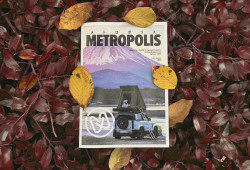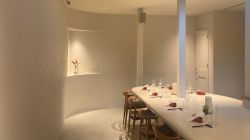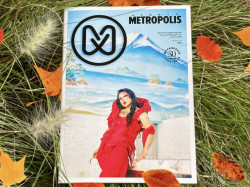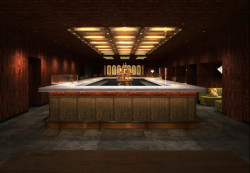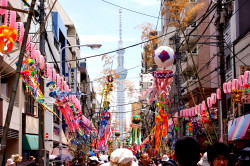
Originally published on metropolis.co.jp on December 2011


Waking up at dawn seems natural in the temples of Koya. Perhaps it’s the mountain air that encourages the early riser, or the influence of the monks’ unwavering devotion to a strict daily routine. For visitors, it’s also a rare opportunity to be a part of these Shingon Buddhist monks’ morning ritual.
Koya is a small, forested temple town in Wakayama prefecture that takes its name from the surrounding mountains—Koya-san (Koya mountain range). Around this small locale are many temples where visitors can stay overnight. It was out of curiosity that I stayed at Shojoshin-in temple, while others make the journey to practice their own beliefs and deepen their understanding of Buddhism. I was grateful that the inquisitive visitor is welcomed as equally as the devotee.
As I awoke, the sun had just begun to rise, lighting my simple tatami room. Guests at Shojoshin-in don’t have to go to morning prayers, but the first sunlight of the day and the cold air creeping through the gaps in the screens is enough to start you stirring. Our eclectic group consisted of a Japanese couple, a large family, two besuited business men and one other foreigner with his Japanese girlfriend.
Three monks knelt in front of me, facing the low-lit shrine adorned with lavish golden ornaments, Buddhist statues, figurines, and offerings in elaborate bowls. Incense smoke curled through the air, caught by the bright strips of light shining through narrow gaps in the screen-doors.

We all kneeled, stunned into silence by the scene around us, as the monks’ melodic chants cut through the stillness of the surrounding mountains, and the rest of the town began to wake.
At Shojoshin-in the monks are talented cooks. Shojin ryori (Buddhist vegetarian cuisine) is served to visitors in the evening and again the following morning. I had expected the food to be good—and it is reputably healthy—but it far exceeded my expectations. That morning, kneeling in front of the shrine, I was still thinking about the meal I’d had the night before. Tiny portions of silky sesame tofu, light vegetable tempura, delicately flavoured seasonal vegetables, sweet sugary plums, clear soup and fluffy white rice. Throughout the day there is no schedule for visitors, which leaves ample time to explore Koya-san independently. If you’d rather be shown around, the local tourist association offers walking tours (¥1000/3 hours). Other cultural experiences include hand-copying Buddhist sutras and Ajikan meditation. You can also hire a bicycle (¥400/hour), to explore the sights and the scenic surroundings.
Each season there is a full calendar of ceremonies and festivals. What’s more, all four seasons have their own show of beauty. Spring brings the blossom, while in summer the mountain town is a cool retreat. Autumn is the season for trees of vivid red leaves, and winter brings a serene blanket of snow.

The main street through Koya is busy, as day-trippers inspect tourist maps and buy hot sweet-bean rice cakes from the street sellers. Just steps away from the main street though, are the tranquil temple courtyards that give you an illusion of supreme solitude. At times Koya can feel undiscovered. Despite inevitable modernization, it has kept its ancient values, traditions and lifestyle. This all adds to the appeal that draws people to the area each season; and temple lodging is the key to become a part of these intriguing surroundings—even if only temporarily.
trip tips
Staying there: There are several opportunities for temple lodging. The temples cannot be contacted directly, but a stay can be organised through Koyasan Tourist Association. One night including dinner and breakfast is from ¥10,000. www.shukubo.jp
Getting there: The express train from Osaka Namba JR Station to Gokura-ku Bashi takes two hours. From there, Koya is a short cable car ride up into the mountains.

